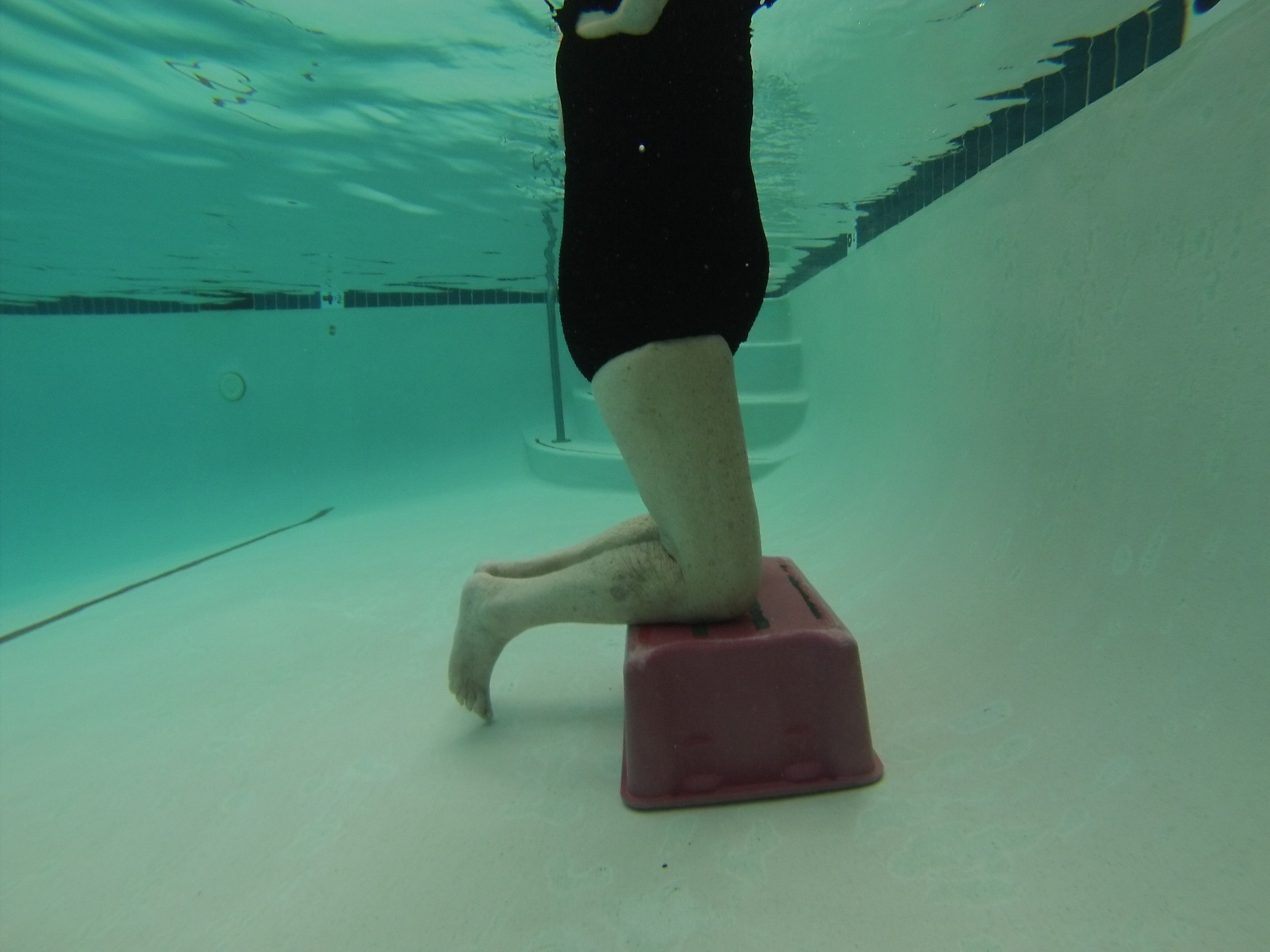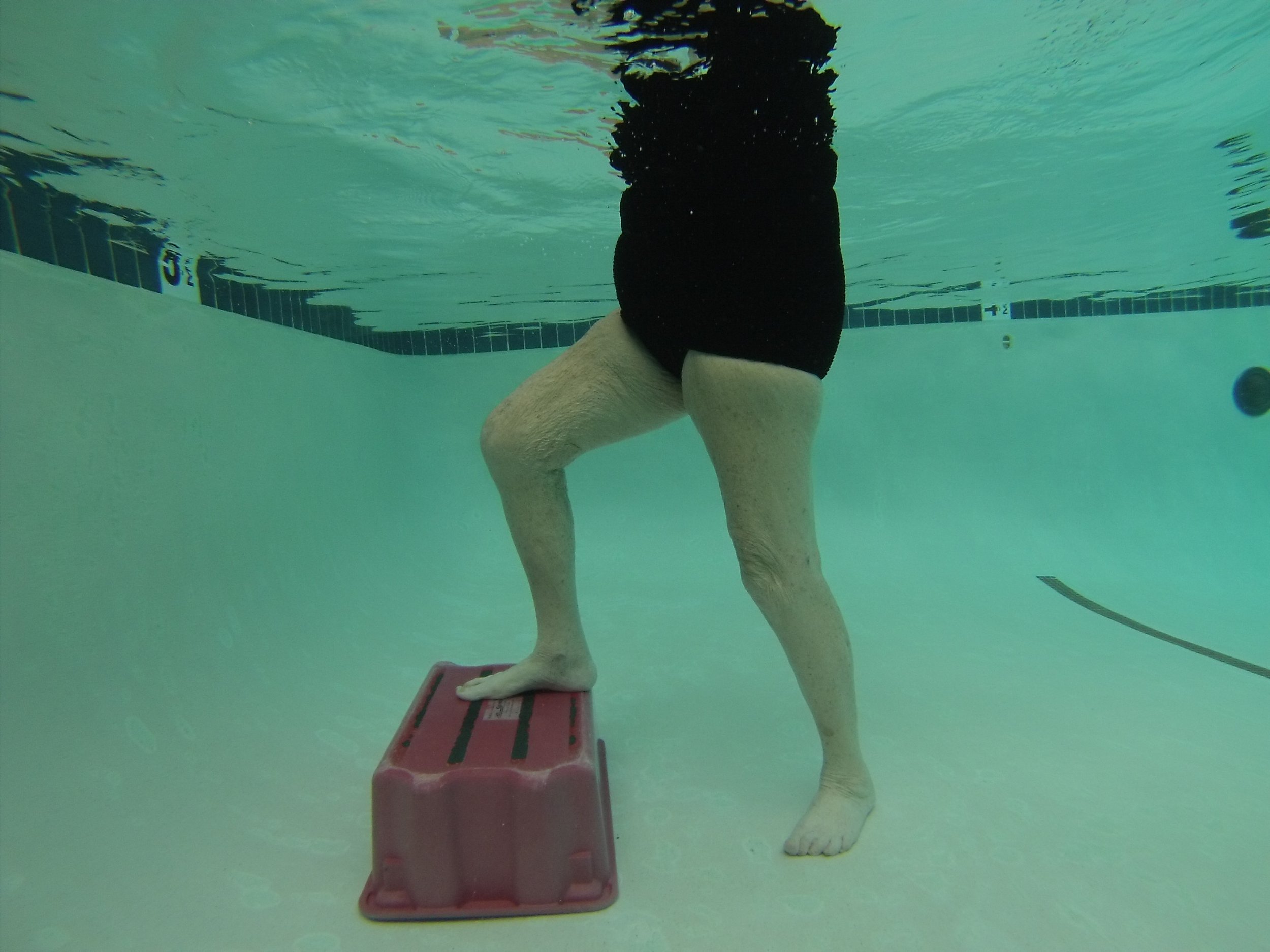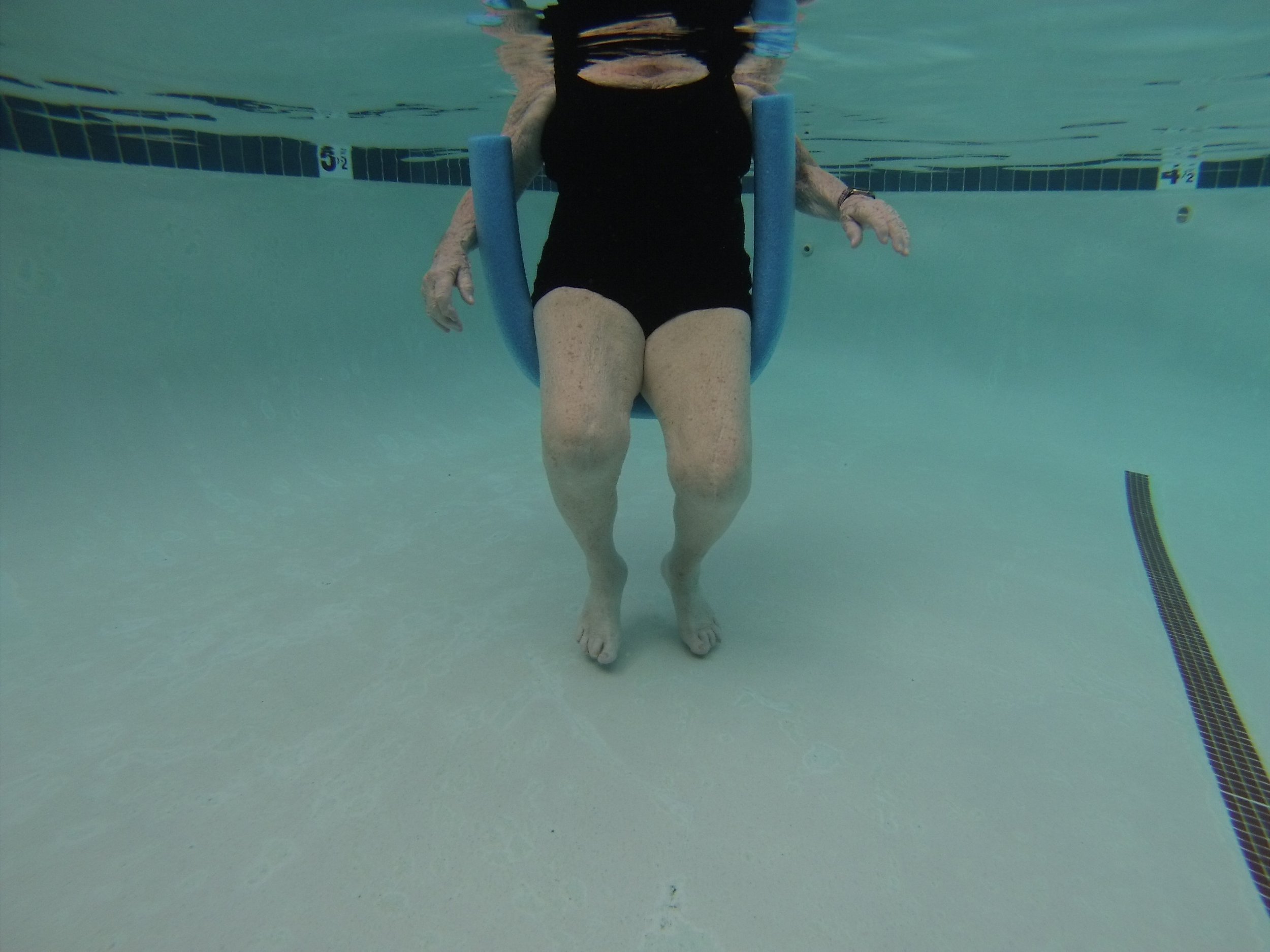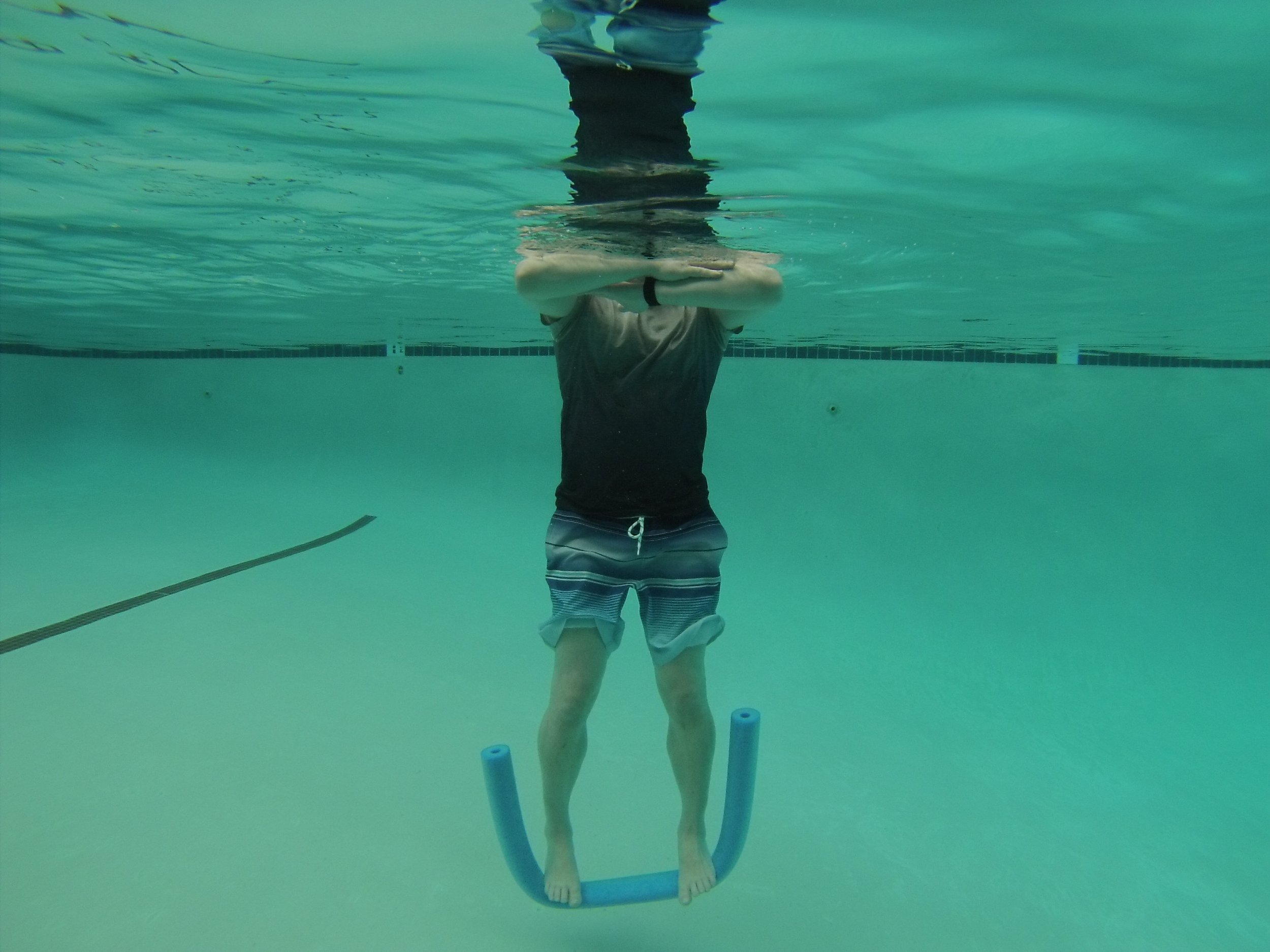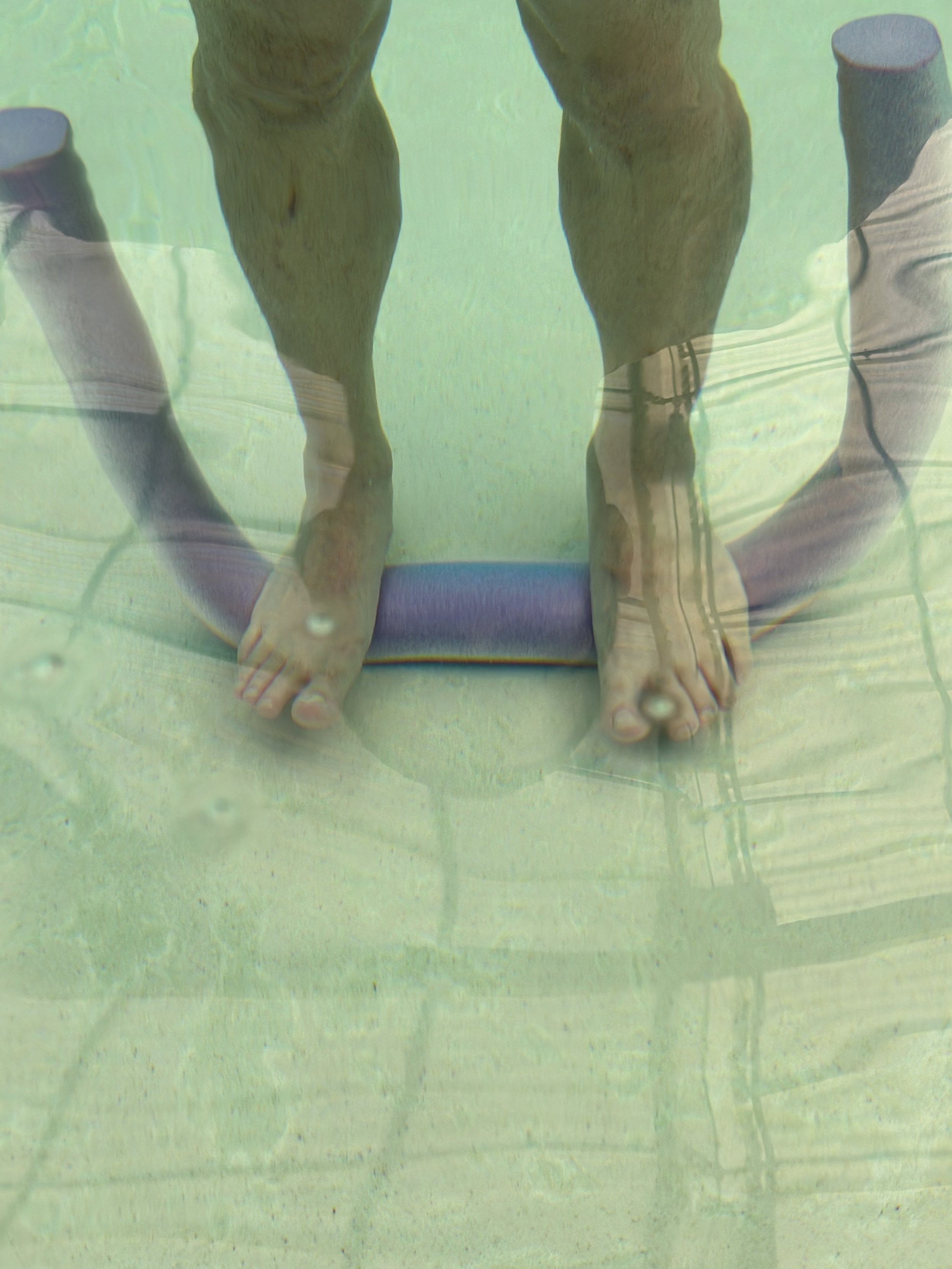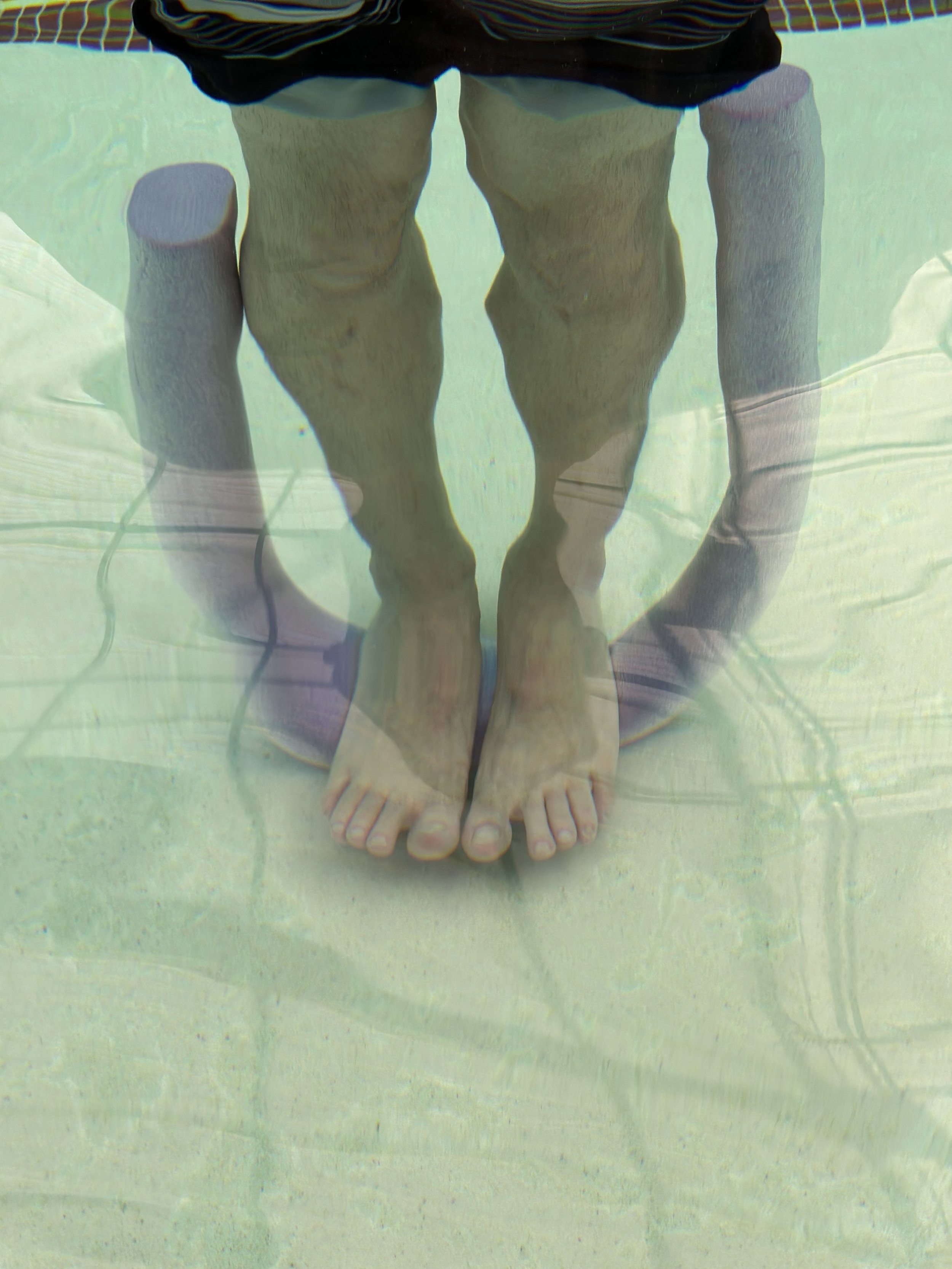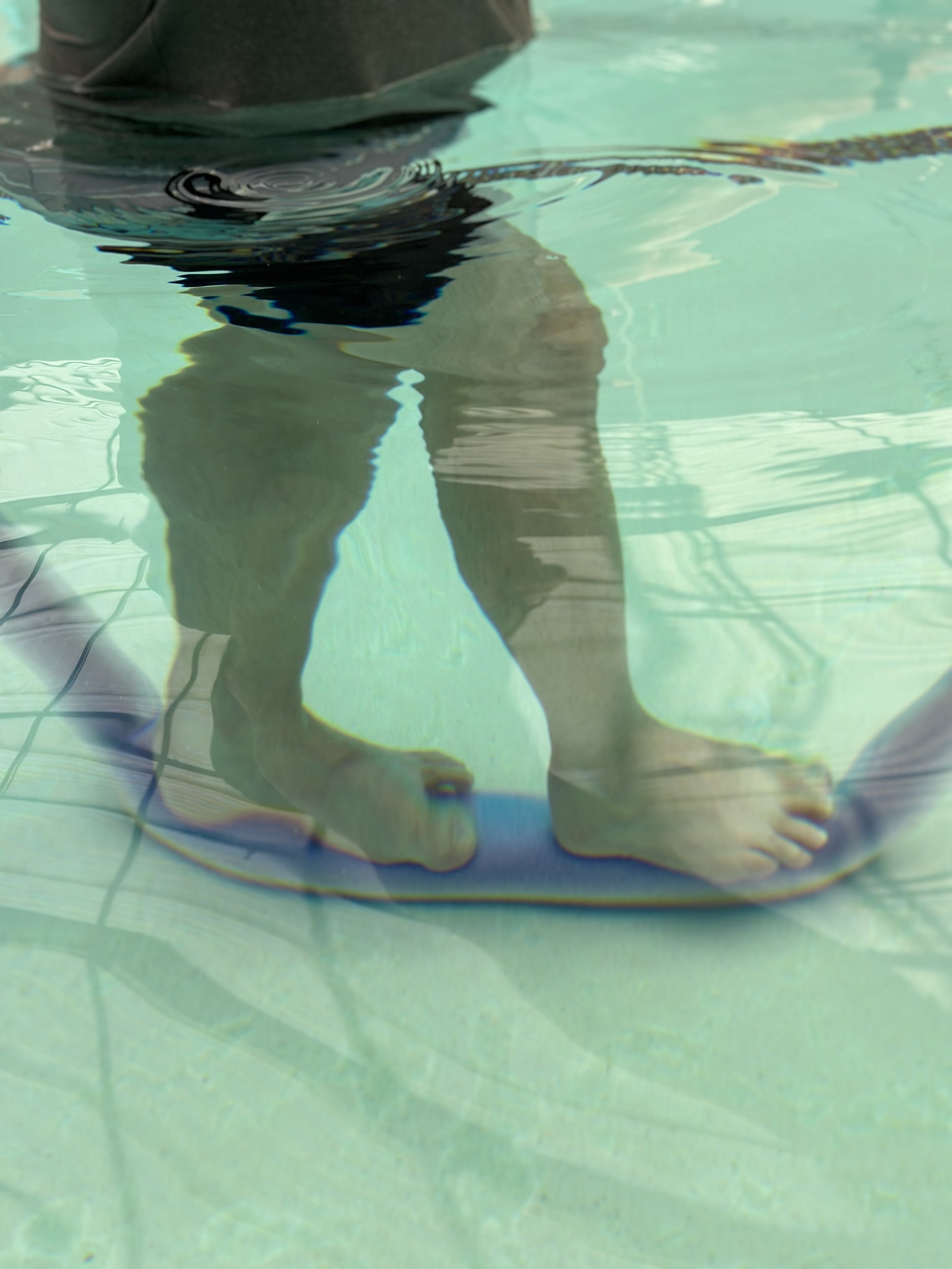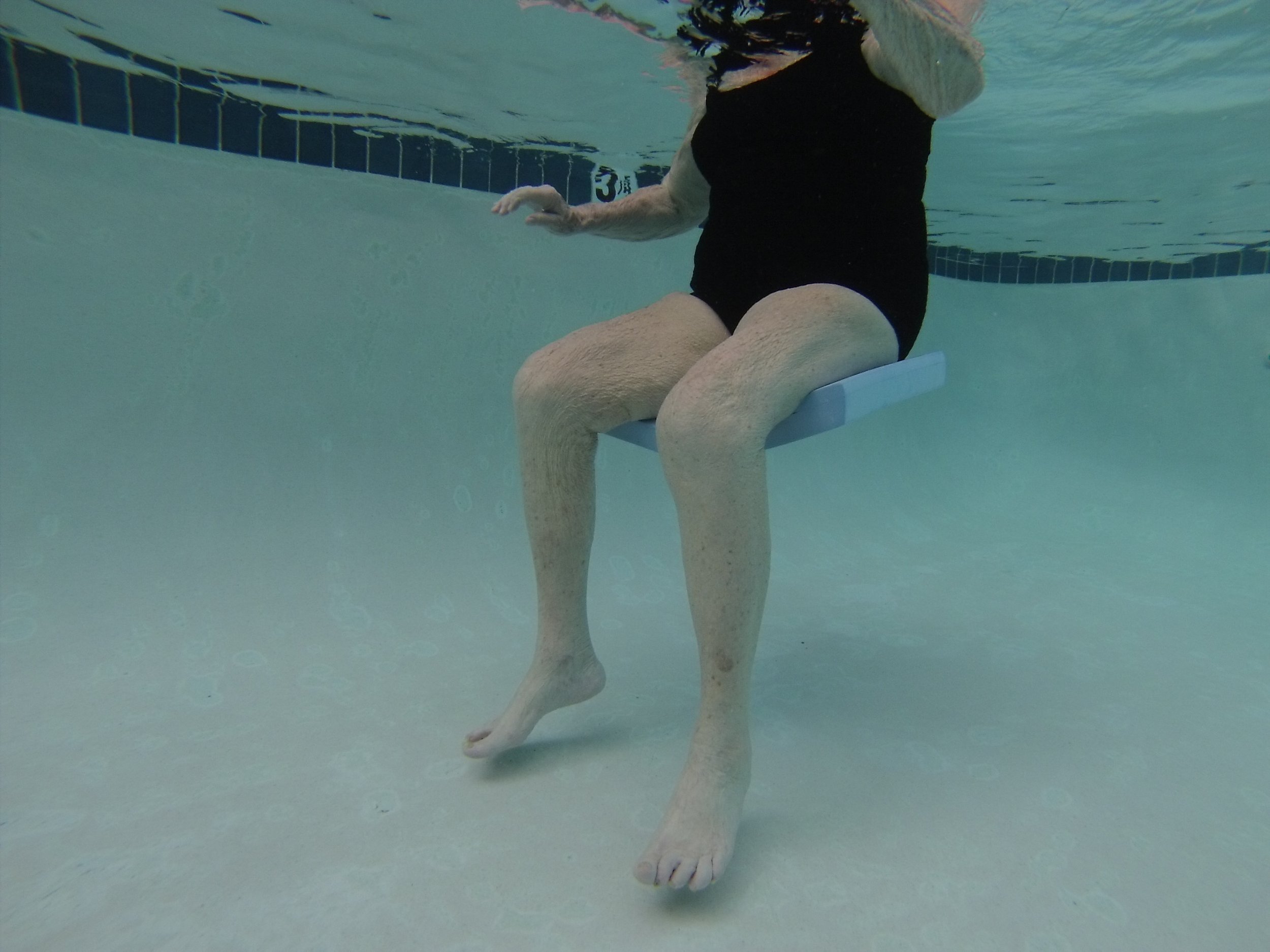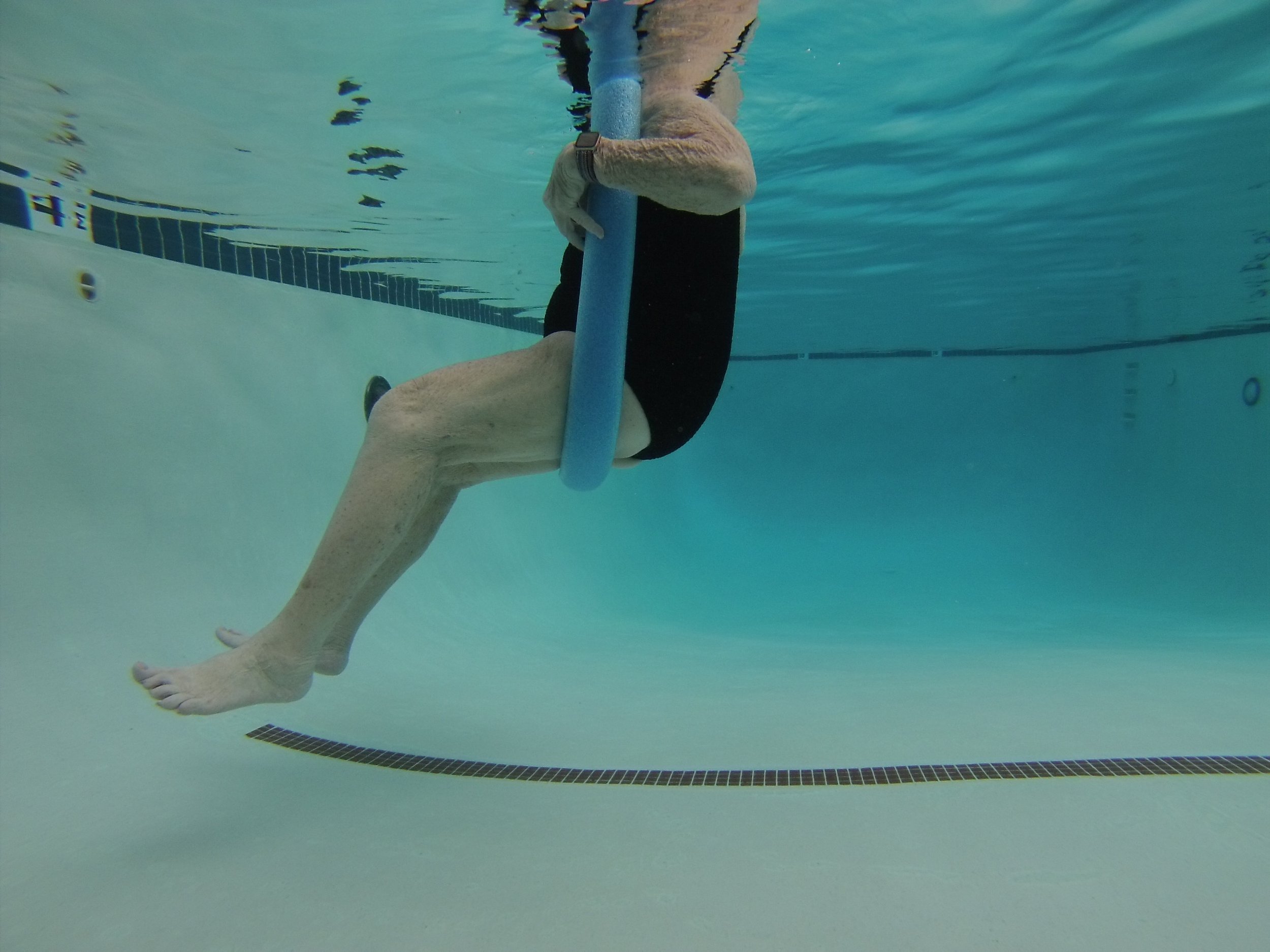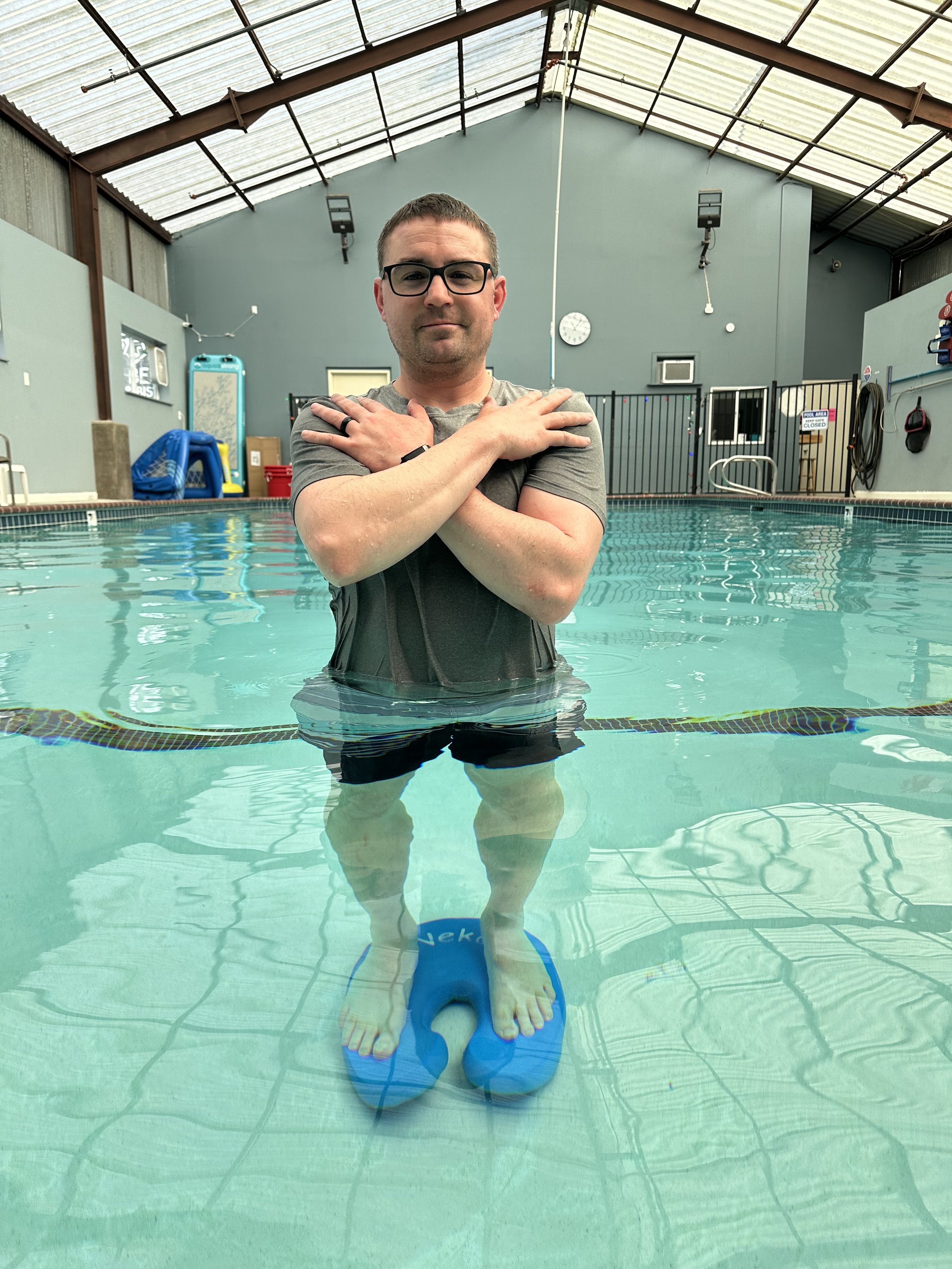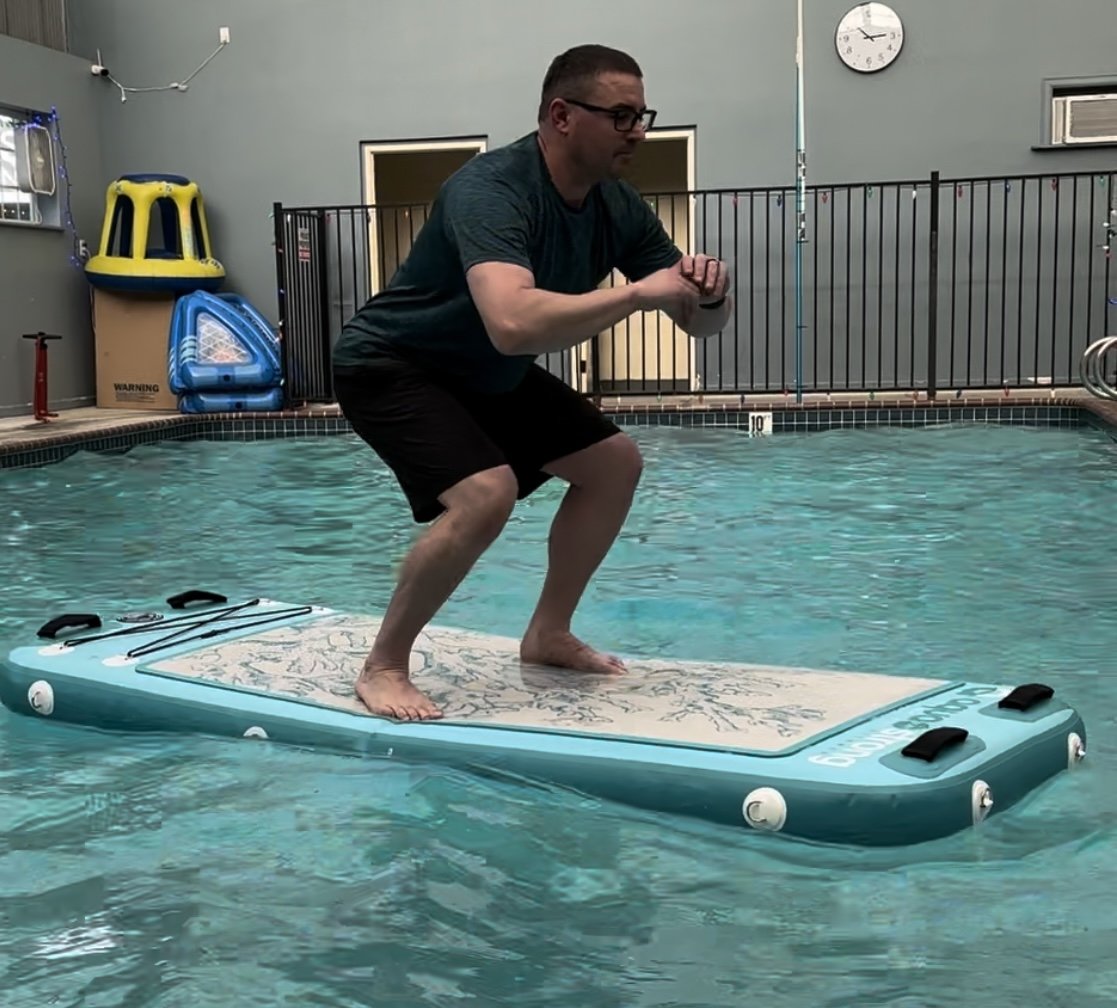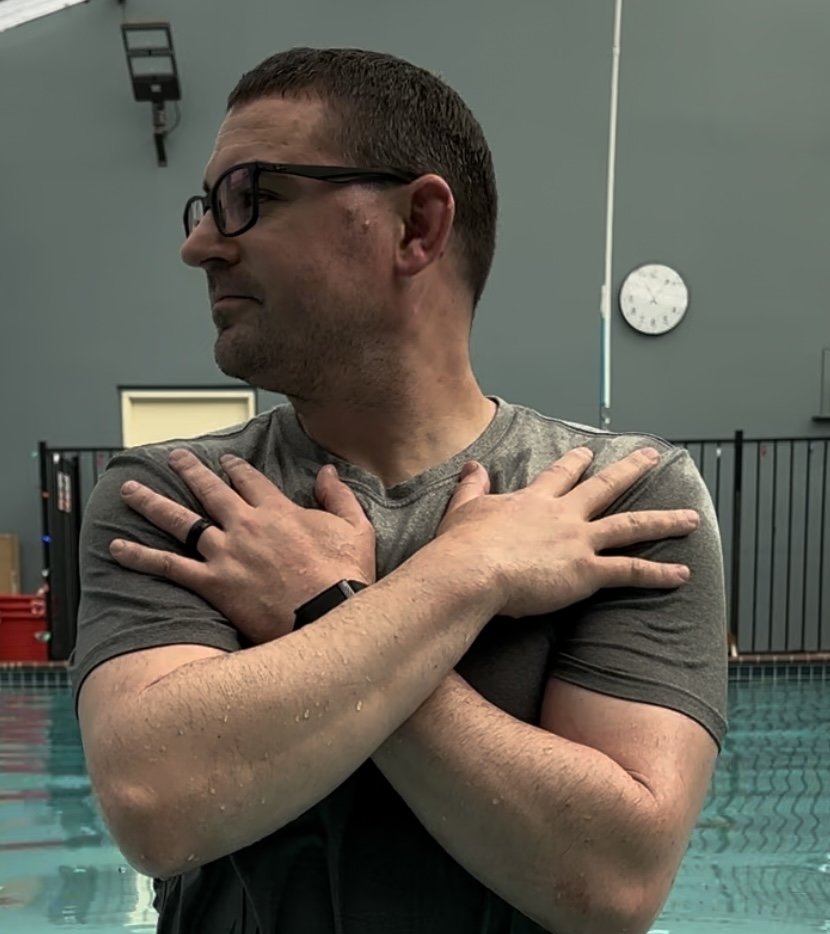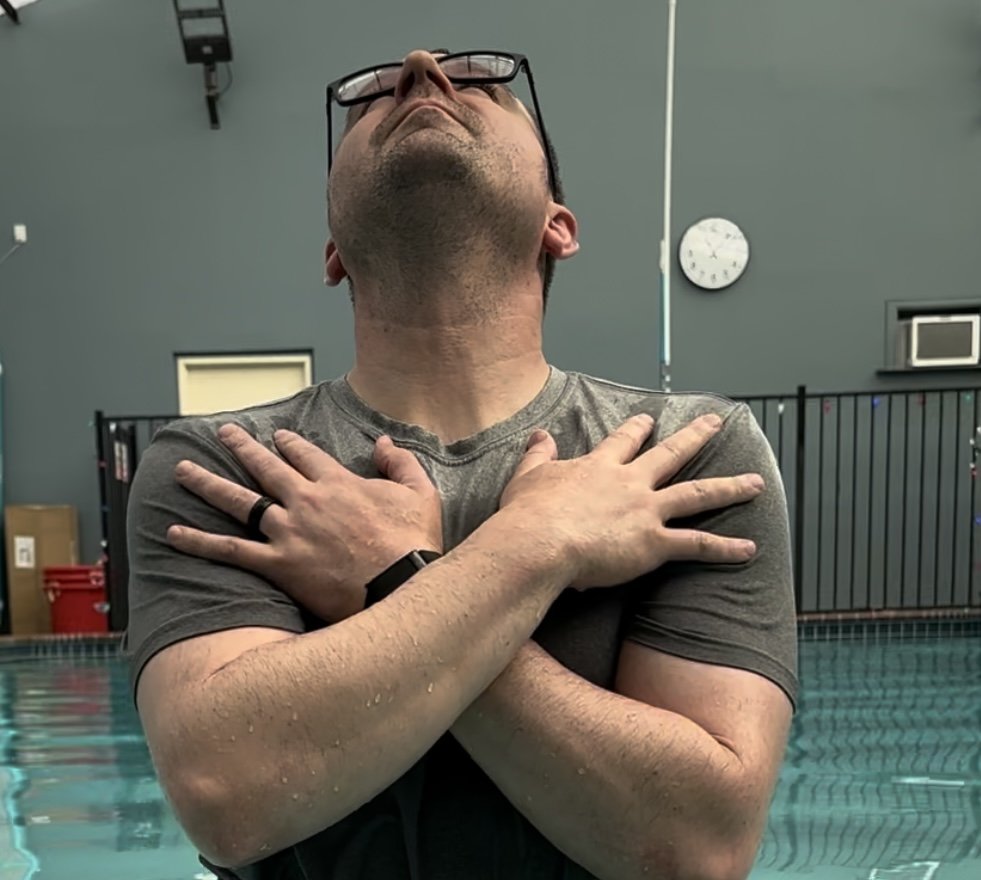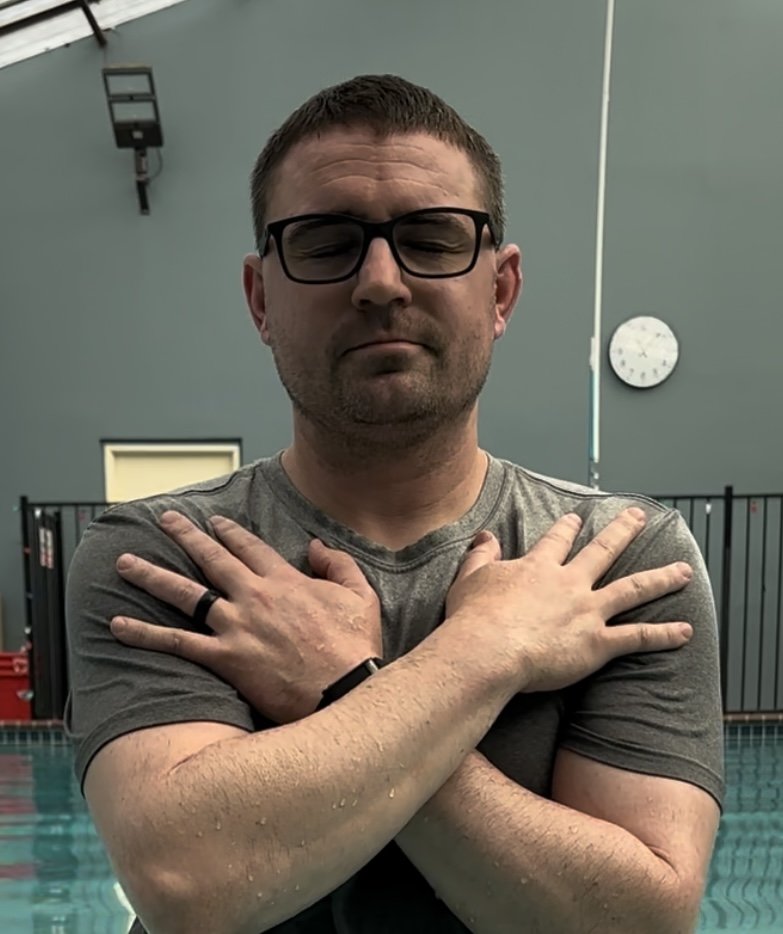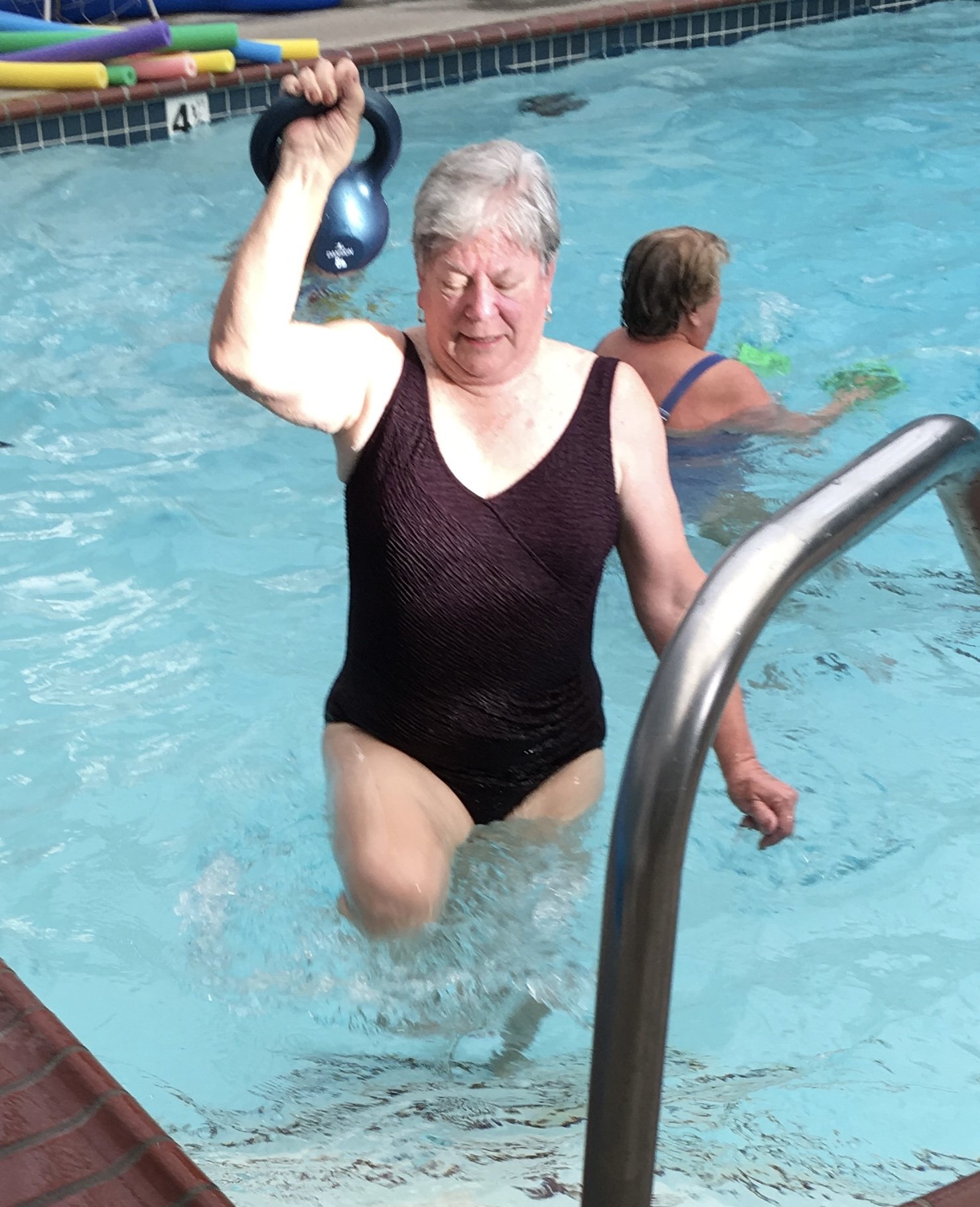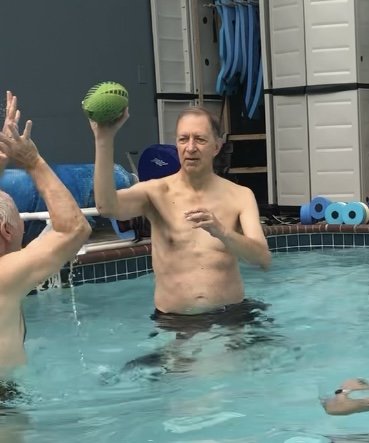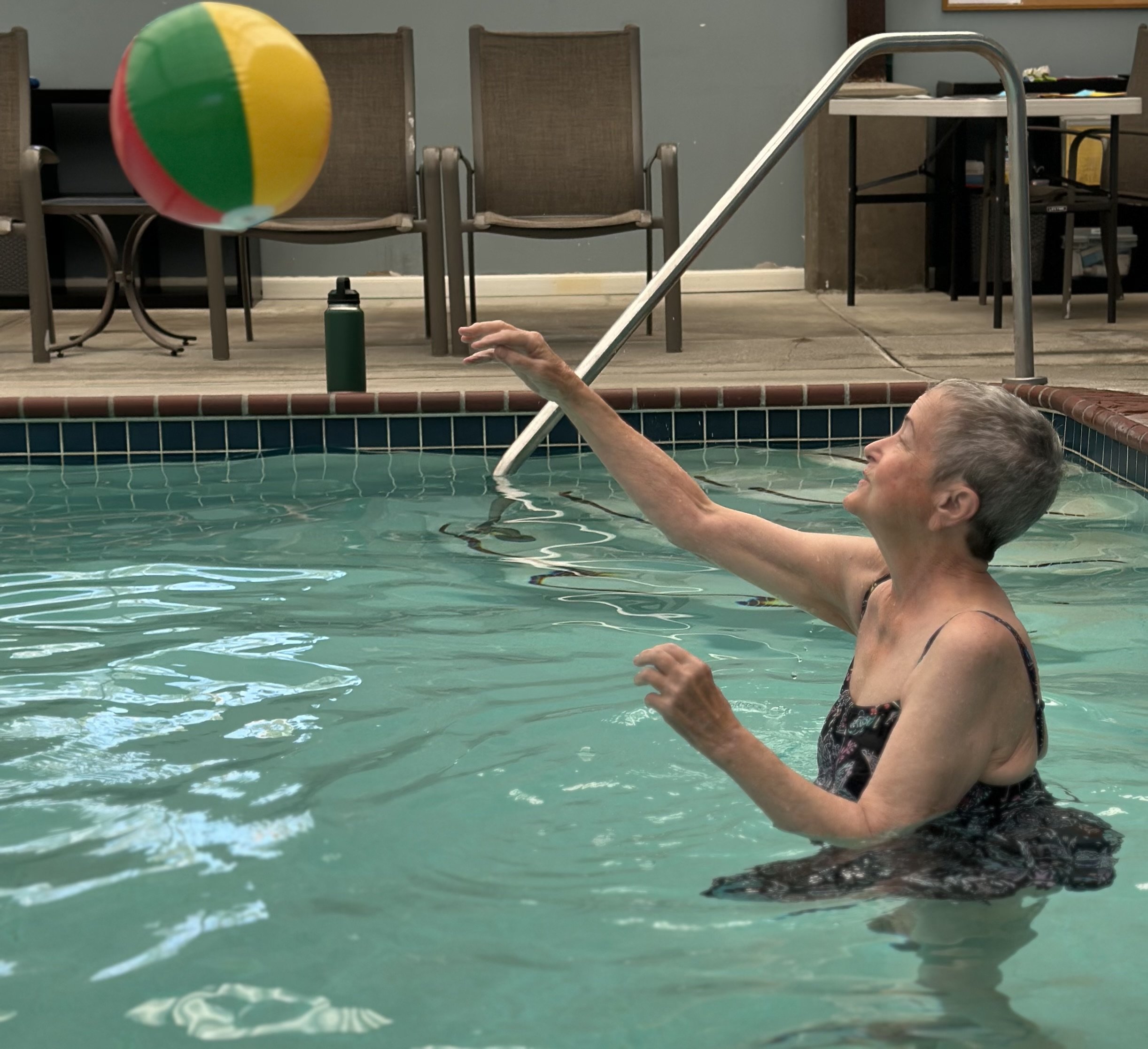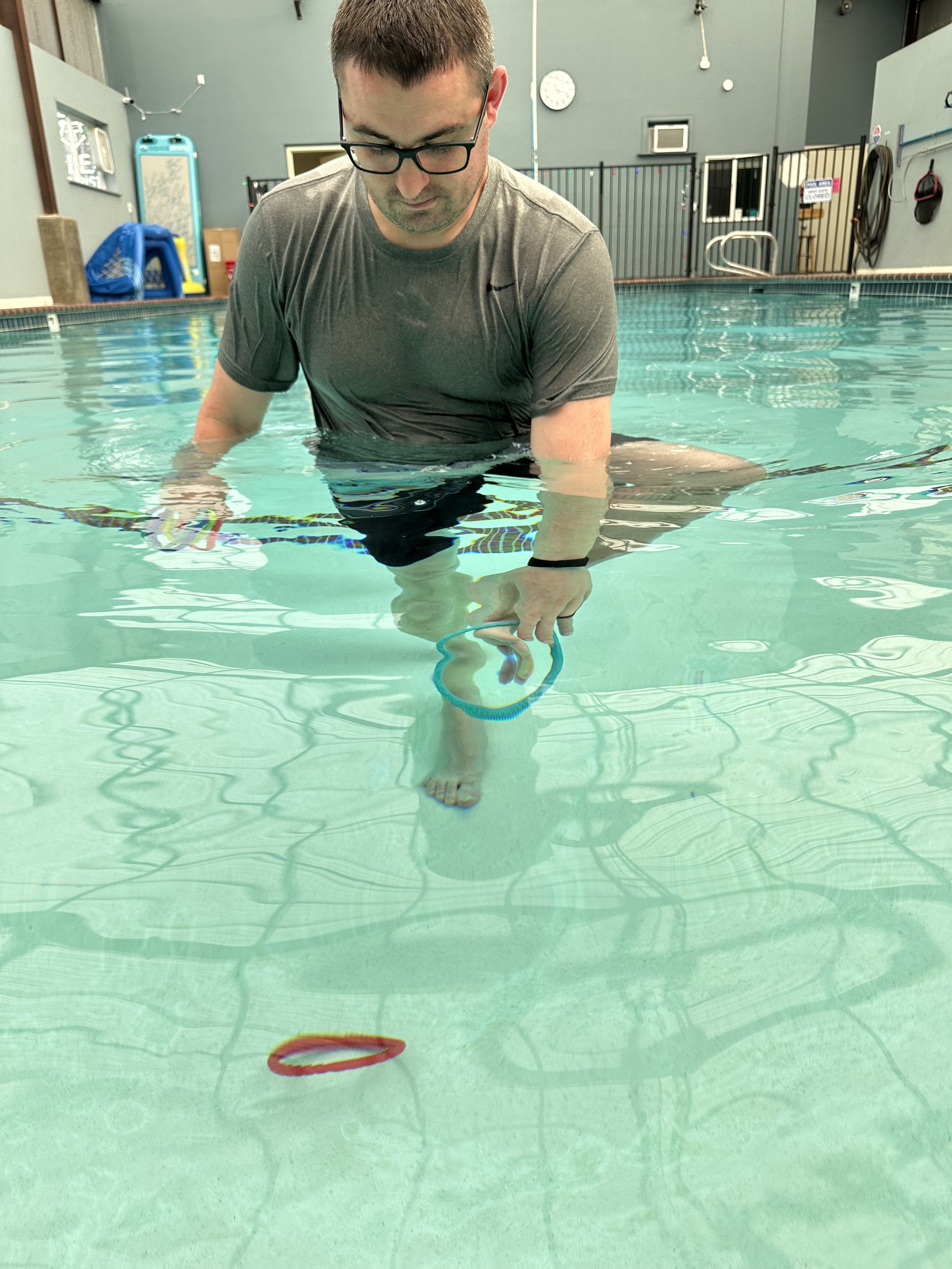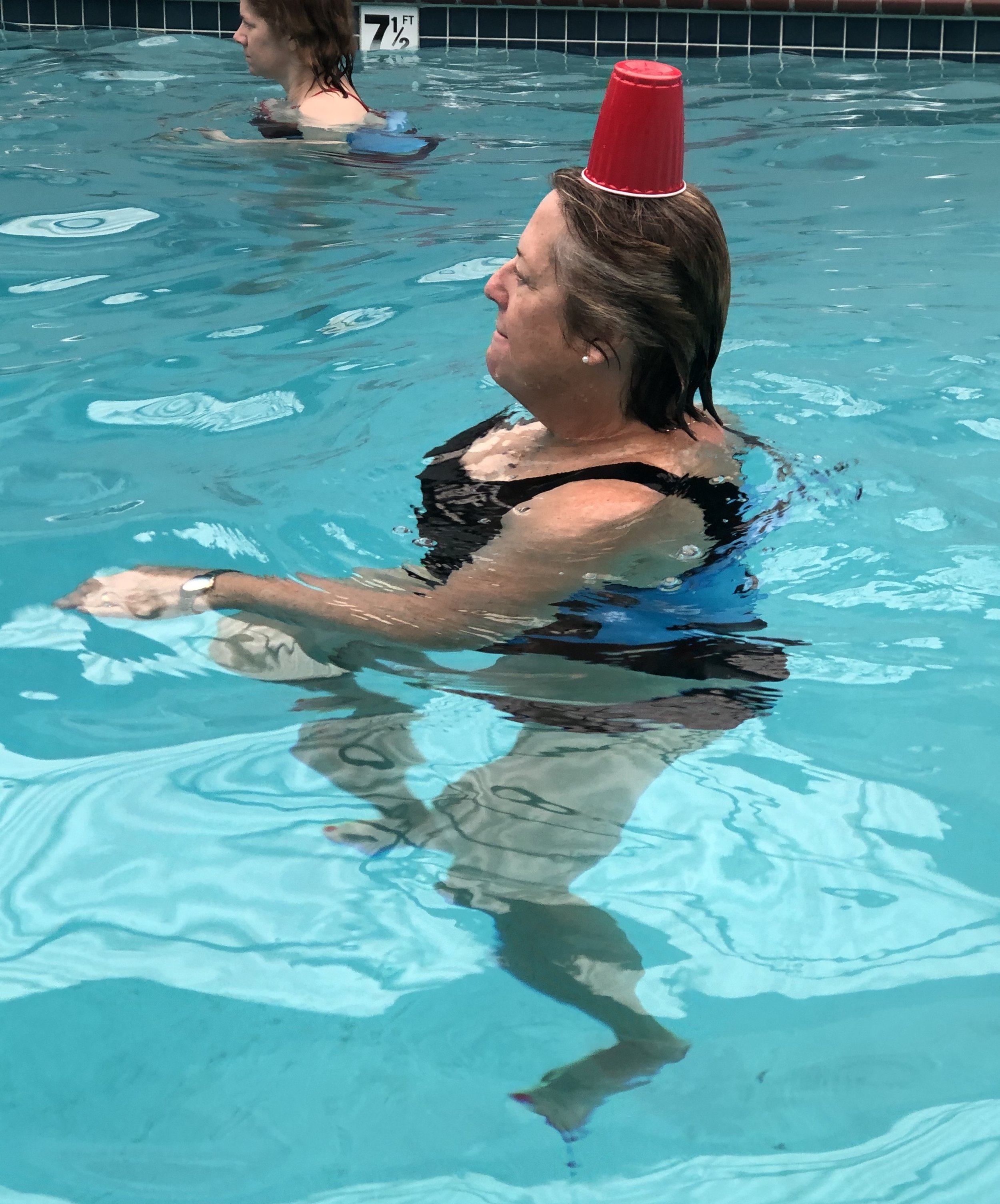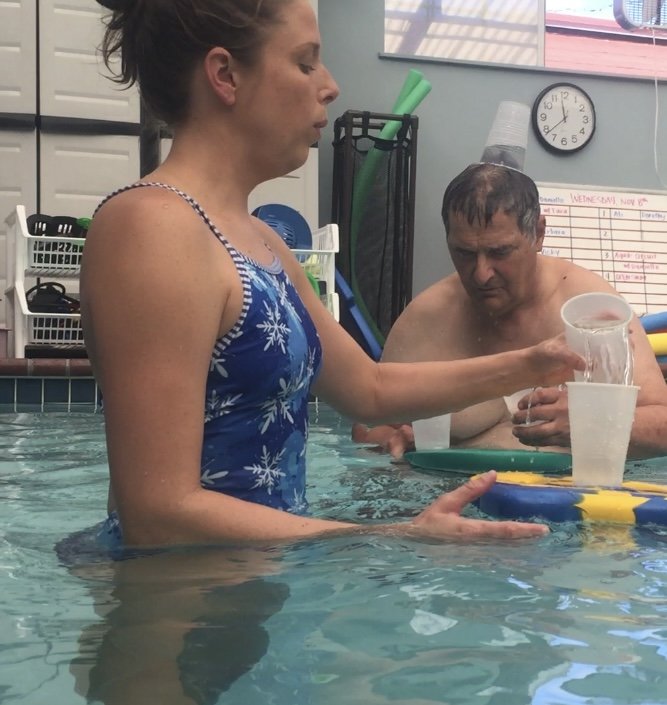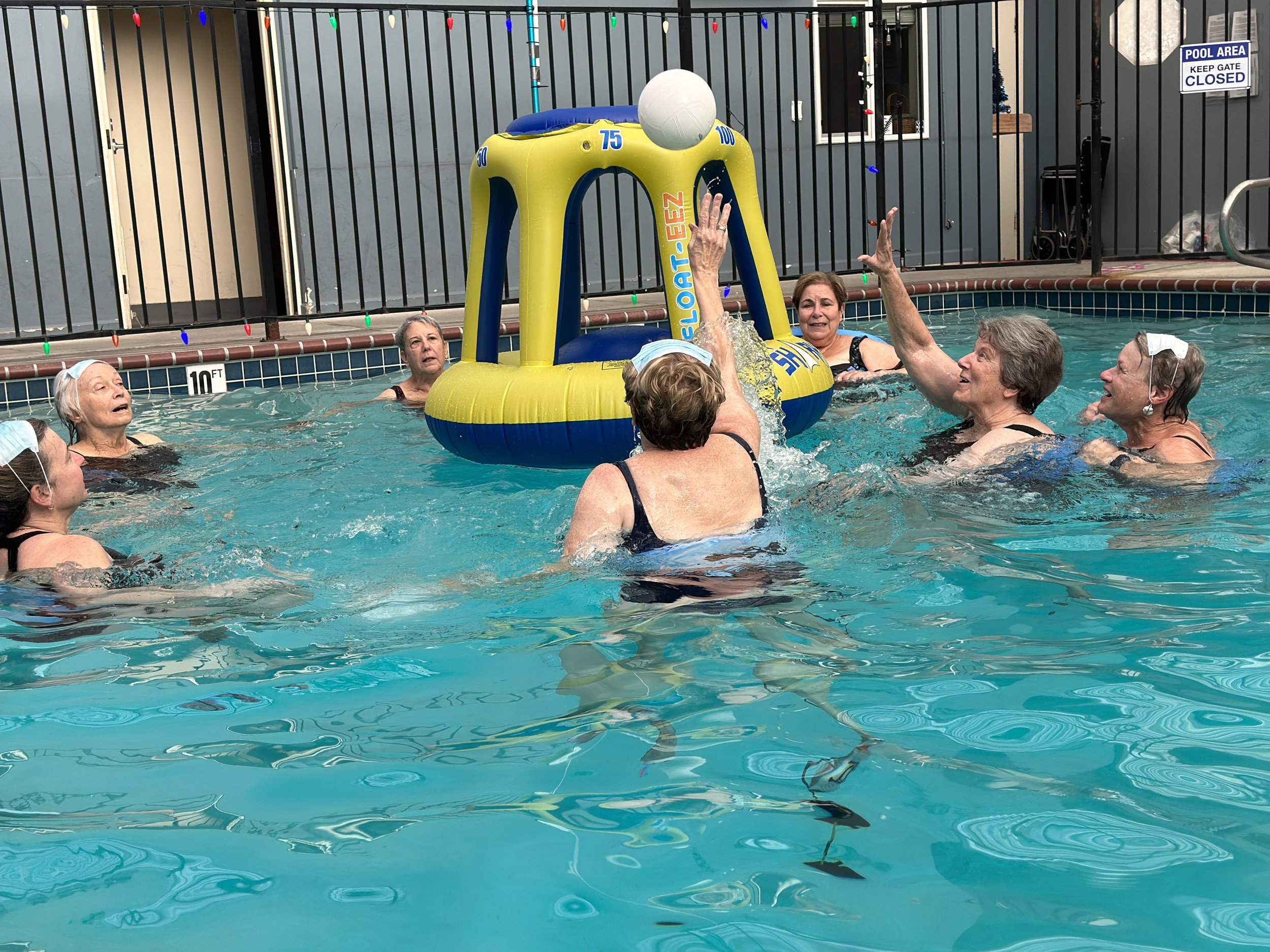6 Ways To Design A Balance Training Program in the Pool
In Part I of our Balance feature, we shared some ways to assess your balance… now it’s time to hit the pool! Using the water for balance training is fun, effective, and safe — one of the pool’s true superpowers!
Before we get started, here’s what the research says:
Balance training must be task-specific. Practicing standing on one foot will help you get better at standing on one foot, but it won’t help with the other elements of balance (like hiking on uneven terrain, using the stepping strategy for fall prevention, and negotiating low-light environments). By first assessing your balance, you can then target the areas that need some work in your exercise program.
Multi-component balance training is better than single-component training. Single-task activities rarely simulate the environmental conditions associated with falling or everyday activities. How often do you simply stand on one foot with your arms across your chest and stare at a wall in front of you? This may be a safe way to practice your balance at home, but taking it a step further and adding a secondary physical or cognitive task will help you get better results.
Task-specific balance training is more effective when performed in an unfatigued state, not after you’ve already done your cardio and strengthening.
Practice makes perfect. Balance is a motor skill that gets better with practice - as long as the exercises are challenging enough, specific enough, and varied enough.
Let’s get wet! Here are 6 ways to create your balance program:
Pick a Body Position
Don’t limit your balance training to just standing! Balance tasks can be performed in sitting, half kneeling, tall kneeling, and standing. If your pool is shallow enough (or has a beach entry), you may even be able to practice floor transfers!
Whatever position you select, try to maintain your best posture. In standing, use a “tripod foot stance” by maintaining pressure under your heel and the head of your 1st metatarsal (ball of big toe) and 5th metatarsal (ball of little toe).
2. Select your Base of Support
The closer your feet are together, the harder the task will be. This is true for both sitting and standing!
Some natural progressions:
Natural base of support (feet are hip or shoulder-width apart)
Narrow base of support (feet together)
Tandem (one foot in front of the other)
On one foot
Suspended (if sitting in deep water)
3. Mix up your Surface Type
We encounter many different surfaces throughout our day: hardwood floors, carpeted floors, grass, sand, ice, tiles, and more! Consider altering the surface for your balance training in the water, too, in order to make your exercises more challenging. Changing the surface will provide unique sensory feedback and force your body to work in different ways.
IN SITTING: seated exercises can be performed in shallow water (with a foot or two on the floor) or suspended in deep water… try sitting on a pool noodle, buoyancy barbell, wonderboard, or pool skateboard.
IN STANDING: start barefoot on the pool floor. When your balance exercises feel easy, progress to a foam Nekdoodle or pool noodle. The noodle will force your ankles to rock forward/backward (or side to side, if you’re in a tandem position), improving your body’s ankle strategy for fall prevention!
Standing balance exercises can be performed on a noodle in deep water, too; however, they tend to address your trunk stability more than your true “balance” when you’re suspended. Our tip: practice your balance exercises both ways — standing on a noodle in shallow water AND in deep water — to maximize results!
4. Alter your Visual Cues
We rely heavily on our vision for balance since our sight allows us to see where our body is in space and helps us to identify potential obstacles in our path. If you had a hard time with balance tests with your eyes closed, or if you have noticed some balance issues at night, you are likely very vision-dominant when it comes to your stability. To work on this, you need to alter your visual input when performing balance tasks.
Some suggestions:
Start with your eyes open.
Add head turns (looking left and right) or head nods (looking up down)
Keep your head to one side (or up or down).
Close your eyes.
5. Put It All Together: Dual Tasking
Multi-component exercises are more effective at improving balance than single-task exercises, so here’s your chance to put it all together. There’s no real “right” or “wrong” way to do this, and you can include physical tasks AND cognitive tasks! Mix up your exercises each time, have fun, challenge yourself, and try replicating everyday activities.
Some of our favorites:
Do squats or step ups while holding a weighted ball.
Add an overhead reach (with a ball or weight) when doing calf raises to simulate reaching on your tiptoes for a high shelf.
Create an obstacle course - move on, around, and over blocks of different heights. Scan the environment for things that are red & carry a pool toy on a kickboard while you do it. (Don’t let the toy fall off the board!)
Stand on one foot when performing your upper body strengthening exercises with resistance equipment. Close your eyes or turn your head side-to-side at the same time.
Stand on one foot (or a base of support of your choice) and practice hitting a beach ball from your left to right hand.
Stand on one foot and pick up dive rings from the floor with your opposite leg. Work on the word scramble at the same time.
PLAY! A game of water volleyball, football, or basketball will challenge your coordination, reflexes, and dynamic balance.
6. Practice Falling
Lastly, the pool is the perfect place for perturbation training! Imagine yourself walking down a crowded beach path carrying your towel, beach chair, and tote bag in both hands. Suddenly, a loose dog runs into you. Do you fall? Or are you able to take a quick step and catch yourself?
If your stepping strategy needs work, the water is our preferred environment to practice your slips and trips. There’s no real risk of injury, and the worst that might happen is your hair could get wet!
Perturbation training can be performed many different ways. You may choose to stand still and have a friend create water perturbations with a kickboard (or ask her to run around you!), or a staff member could provide hands-on perturbations. By doing this, you’ll practice your ankle and hip strategies for fall prevention. To practice your stepping strategy, let your body lean forward (or backward), and at the last second, take a strong step to avoid falling into the water. Be safe: make sure you aren’t near the pool wall or other swimmers!
We LOVE working on balance in the pool.
Over the years, we’ve had the opportunity to design balance training programs for clients with a variety of needs (recurring ankle sprains, Parkinson’s Disease, neuropathy, joint replacements… even young children learning to walk!), and it has been so rewarding to see how successful they were in the water.
If you’re in the Santa Barbara area and would like to take advantage of our experience and our passion for the pool, here are some of our program recommendations at Anderson Aquatics:
GROUP CLASSES: Hard Core Balance, Aqua Yoga, and Water Warriors are our top picks for boosting static/dynamic balance and coordination. The class descriptions and schedule can be found here.
1:1 OR SMALL GROUP PERSONAL TRAINING: We’ll start with an assessment on land to determine what areas we need to target when creating a customized pool program for you. We offer both 1-time sessions and regular (weekly) training sessions. More info about personal training options can be found here.
OPEN POOL: If you already know what to do, you can use our warm water pool & all of our pool toys to practice your balance on your own. Find our schedule and rates here.
After reading parts I & II of our balance blog, what questions do you have? What are your go-to exercises for balance training in the water?
Content provided on this website is for informational and educational purposes only; it does not constitute providing medical advice or professional services. Always seek the advice of your physician regarding your health conditions and prior to initiating an exercise program.

